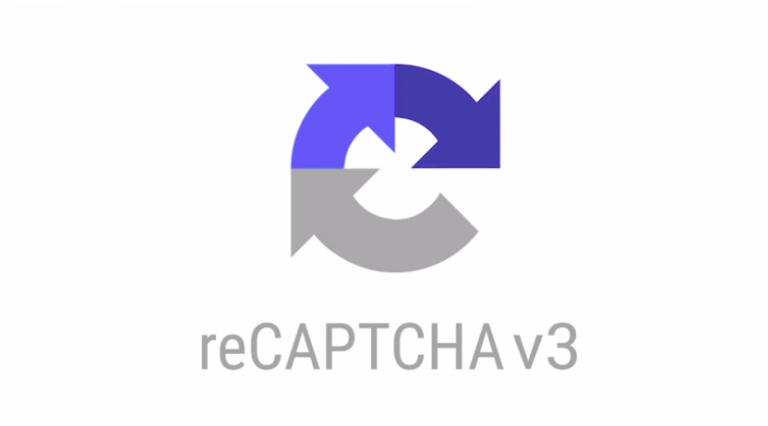10 Ways to Write Great Content for Google
Editor note: This article has been updated to provide more in-depth information and accuracy as of 2018
10 Ways to Write Great Content for Google
Creating content for the purpose of ranking has changed dramatically over the years. In the past business would keyword stuff their content and create content like:
'"buy your computer spares in London from us because we sell computer spares in London. Being based in London, we can sell you computer spares if you are in the market for computer spares in London'
Paragraphs like this, whilst terrible for user experience, were used as a way to include all the keywords you need to rank for your chosen topic. However, algorithm changes have seen this old strategy abolished. In fact, those who still employ this type of content are penalised for doing so.
Express writers have a great infographic that runs through every Google algorithm change and how they have impacted content creators. It's an interesting read if you're looking to learn about the history of SEO writing.
More recently, Google has placed focus on the quality of content opposed to quantity and targetting. Keywords certainly still have their place, but the focus is now on actually providing useful content for your users.
Let's have a look at ways you can create great content for Google...
Are You Solving Problems or Writing Only for Google?
The biggest change on ranking influence is your ability to make content that is a) relevant and b) helps solve the search query. If your visitor found you by searching "how to write good content for google" and you don't deliver, Google is not going to favour your page above someone else's.
The days of Keyword stuffing and click bait titles are long gone. It is frowned upon to continue these practices, not only from Google's point of view but the users as well.
Unfortunately for some, there is no replacement for great content. Great content can entice the reader, keep them on the page longer and really sell the value they're seeking. Low quality, unrelated content won't sit well with your users. If they do not find the content valuable, neither will Google.
It's also important to consider that once a user leaves your website after a poor experience, they aren't likely to return. If they do via a different organic search result, they may remember your brand and immediately leave.
Include Sub Headings
Subheadings not only break the text well, but they're also expected. No-one likes to read through a 20 line paragraph. Heading tags H1-H6 will have varying effects on font sizes which generally relate to importance. H1 tags are seen as the most important on a page; usually, these will be the title of an article or page.
Generally has been used because John Mueller from Google, when asked how many H1's to use on a page, answered with "As many as you want". This can be taken in many ways so we'll leave it to you to draw your conclusions on how header tags impact SEO.
We have said that nothing can replace great content. Remember that your subheadings need to layout the page in a user-friendly manner, whilst maintaining relevancy. They should not be used every other paragraph (unless you're doing a top 100...)
Work on your Content Length
There has long been a debate on the perfect content length. This is more commonly discussed in regards to blog posts, but the same can be applied to core pages on your website too.
With Google's focus on the quality of content, the ideal length should be whatever covers the topic the most concisely. If you can explain your service in 500 words then that's great. If it takes you a little more, that's fine too.
The emphasis here is not to word stuff. Neither you nor your audience benefit from filler text. Google will be able to pick up on this for the most part as it constitutes similarly to keyword stuffing. You are putting in additional words, maybe even paragraphs of pointless text just to fill the space.
For blog articles, many will say that articles around 1200 words are good. This is because it's sufficient enough to provide an in-depth analysis of the topic you are talking about without having to stretch the information.
Of course, this is subjective to the topic of discussion. You may find that you are going well into the 2000's when writing.
The key here is understanding what your audience wants. Are they going to want to consume a 3000-word article? Will they appreciate you explaining your service in 1000 words? Do they want to scroll multiple times to reach the bottom of a core page?
Answering these questions is the first step. As a content writer, you will often notice when you are waffling. Once you begin waffling, stop and re-evaluate the topic, your audience and the purpose for the content itself.

Research your Keywords
Ever since Googles Hummingbird algorithm update , subsequent updates have been placing keywords as less of a focus. Keyword stuffing can now see your website penalised and pushed further down in the rankings.
This does not necessarily mean that keywords aren't important. The message here is that they are less important. Exact keyword matching should still be a focus. Creating a page that incorporates keywords that may have similar matching is crucial.
What is the user actually looking for? What may they also be looking for at the same time? If their intent is to find a yellow keyboard, yellow keys, yellow accessories etc. It makes much more sense from a usability perspective to have one page with this information on, rather than individual pages for each product type.
Matching your search term is also important, especially if you are creating an article. Your content is still the biggest ranking factor, but, matching your title accurately with the content on the page will help click-through rates and relevancy.
Include Links Within Your Content
Linking additional content and/or pages is more applicable to blog content due to its nature. However, this can be applied within core pages as well.
When writing your content, it might be beneficial to your reader to link through to additional content that you have done previously. When considering links, it's important to evaluate the benefit they may provide. Linking through to various internal sources makes it seem like you are desperate for that additional traffic.
Alternatively, look for critical points in the content where your reader might be thinking "I wonder what this means" or "I sure would like to know more about that". Analysing these sections will enable you to not only enter a link where it's relevant but also where it's wanted.
Creating a positive user experience is about providing information where it's both wanted and needed. if you are able to do this, you will find that your reader not only clicks the link but also reads the next article.
If you have a strong content strategy in place, you may find that these readers have consumed multiple articles and have placed their trust in your brand.
Similarly, it's important to reference and link any sources that can provide additional relevancy or information to a topic you are discussing. If you make a strong statement like "if you write "give me rank 1" 100 times, Google will make put you at rank 1" you need to have some research to back it up.
Making statements like the above can have either a positive or negative impact:
Whenever the user questions your content or your brand they are not likely to make a purchase.
Consider your Meta Description
Your Meta description is important for click-through rates. A common misconception is that they have an impact on your pages ability to rank directly, however, this is incorrect.
The key word here is 'directly' .
Meta descriptions can have a positive impact on your click through rates for one main reason - if you can create something that entices your audience to click, they will do. Having more click-throughs to the page, more people viewing your content and a better user experience will likely see your page rise in the rankings.
Meta descriptions are being seen to cut off around 160 words. Thus, the optimum description would be just shy of this length. Although, Google will sometimes show less.
If you do not define your meta description, Google will auto-generate it for you. This will usually be the first piece of content it finds on the page or it will select something at random. This isn't usually a bad thing. However, if you have the ability to write a great description for your pages you should do so.
Typically, its best to focus on your meta descriptions for your core pages. This is because there aren't likely to be many of them and a well-generated meta description can really help get viewers onto that page.
You may want to leave the meta description for individual products blank. If you are selling over 500 products, it is going to be very difficult and time-consuming to write a unique meta description for each product.
Google has stated that if you aren't able to write a unique description, it is best to leave it alone. We have covered Meta descriptions and their use in a more recent article. You can read more about this in our article What Does a Meta Description Actually Do?
Always Add Alt. Attributes to Images
Images, similar to text, is crawled by Googles bots. Unfortunately, unlike text, Googles bots aren't advanced enough to know what exactly it is the picture is showing. This is where Alt. attributes are handy.
It's best to think of Alt. Attributes as image descriptions, these are what you use to explain what the image is actually showing. The reason this is important is that Google independently ranks these images in its image search.
You can then leverage this as another possible avenue to rank and gain traffic.
Understanding this will give you the mindset needed to select appropriate descriptors for each image. If you label an image as "website" the likelihood of you ranking is substantially low. Not only that, but it may not accurately represent the actual image.
Instead, you could be more specific "An E-commerce website for an Indian restaurant". Providing more content will help Google understand what it is you are showing exactly.
Write Strong Headlines for Article Pages
Your headline is arguably one of the most important elements of an article. Not only is it used to generate interest but also to display relevancy to the content of the article.
More importantly, it could be the only indicator a user sees during their search. If you think about your own search habits, how often do you read the entire meta description? How often do you consider multiple options for what to select?
Many of us will quickly scan the title, see what relates to our search term the most (or what entices us the most) and click straight through to that article. Normally, this will be one of the top 3 search results. This highlights exactly why the title you select is crucial.
There are many tactics you can use to create strong titles. Using a list title (top 10's, x ways etc) are good for topics that have multiple areas to discuss. Similarly to this article. It tells your readers that you're going to give them a list that they can scan through and learn everything.
Others employ controversial or "shocking" titles to reel in visitors. These titles take the structure of "you will not believe what xx ...". Depending on the topic that you are discussing, this may work. It's important to understand that this structure should only be used once every so often.
Sometimes, your site layout can affect the quality of your content. Designers and copywriters need to collaborate to get the best result, not only for user experience but SEO as well. You can read more about it in our article Why Designers and Copywriters Should Collaborate






